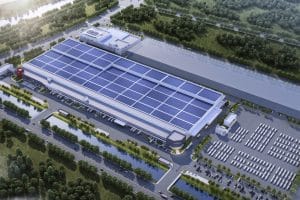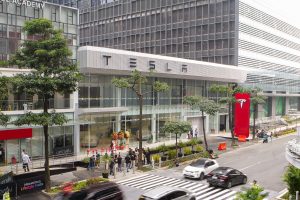- 🔋 Tesla’s new supercomputing cluster at Giga Texas will aim to use ~130MW of power this year.
- ⚡ Power usage will increase to over 500MW in the next 18 months.
- 🧠 The cluster will use half Tesla’s own hardware and half Nvidia or other companies’ hardware.
- 🛠️ The training center requires extensive cooling infrastructure, including fans, water tanks, and underground water lines.
- 🌊 The cooling system is being built on the building’s second floor to handle the supercomputing needs.
- 💰 Nvidia hardware will constitute $3-$4 billion of Tesla’s AI-related expenditures this year, out of a total $10 billion.
- 🤖 The expenditures will also include Tesla’s AI inference computer and the Dojo system.
- 🏗️ The announcement coincides with the nearing completion of Tesla’s South factory expansion.
Tesla, under the visionary leadership of Elon Musk, has always been at the forefront of technological innovation. From electric vehicles to solar energy solutions, the company continues to push the envelope. The latest feather in Tesla’s cap is its ambitious supercomputing cluster at Giga Texas. In this blog post, we’ll dive deep into the intricacies of this project, its power needs, the hardware involved, and the cooling infrastructure that makes it all possible.
Understanding the Power Needs
One of the most staggering aspects of Tesla’s new supercomputing cluster is its massive power requirement. Elon Musk recently revealed that the cluster will aim to use around 130MW of power for this year. But that’s just the beginning. Over the next 18 months, the power usage will shoot up to over 500MW. To put this into perspective, 500MW is enough to power roughly 375,000 homes. This reveals the sheer scale of computing power Tesla is planning to harness at Giga Texas.
Hardware Breakdown
A Mix of Tesla and Nvidia Hardware
- Tesla’s Own Hardware: Half of the hardware used in the cluster will be Tesla’s very own AI inference computer and the Dojo system. Tesla’s designed AI inference computer is already embedded in all Tesla vehicles, which highlights its robustness and reliability.
- Nvidia and Other Companies: The remaining half of the hardware will come from Nvidia or other companies. Musk has stated that Nvidia hardware alone would make up $3-$4 billion of Tesla’s AI-related expenditures this year. Given that Tesla is poised to spend approximately $10 billion on AI-related ventures this year, Nvidia’s contribution alone is substantial.
Cooling Infrastructure
To support such vast computational power, a robust cooling system is non-negotiable. Tesla’s Giga Texas will feature:
- Giant Fans: Massive fans will be utilized to dissipate the extreme heat generated by the supercomputing hardware.
- Water Tanks and Underground Water Lines: Four substantial water tanks, along with extensive underground water lines, will help manage the cooling needs efficiently.
- Second-Floor Cooling System: An expansive cooling infrastructure will be set up on the building’s second floor, underscoring the importance Tesla puts on maintaining optimal operational conditions for its supercomputers.
The Bigger Picture
Financial Commitment
Elon Musk’s announcement aligns with Tesla’s broader strategy to remain a dominant player in AI and computational technologies. The expenditures reflect Tesla’s long-term commitment to harnessing advanced technologies for AI training, vehicle automation, and more. By leveraging both its proprietary hardware and high-performance solutions from industry giants like Nvidia, Tesla is ensuring that its supercomputing cluster is both versatile and powerful.
Factory Expansion and Future Prospects
The timing of this announcement coincides with Tesla nearing the completion of its South factory expansion at Giga Texas. This expansion will house this new computing cluster, marking another milestone in Tesla’s journey. The completion of this factory will not only bolster Tesla’s manufacturing capabilities but also its ability to innovate and push the boundaries of what’s technologically possible.
Conclusion
Tesla’s supercomputing cluster at Giga Texas is more than just an assembly of high-performance hardware; it’s a testament to the company’s ambitious vision for the future. By harnessing massive computing power, Tesla aims to propel advancements in AI, autonomous driving, and beyond. As we watch this project unfold, one thing is clear: Tesla continues to set new benchmarks, not just in the automotive industry but in technology at large.





